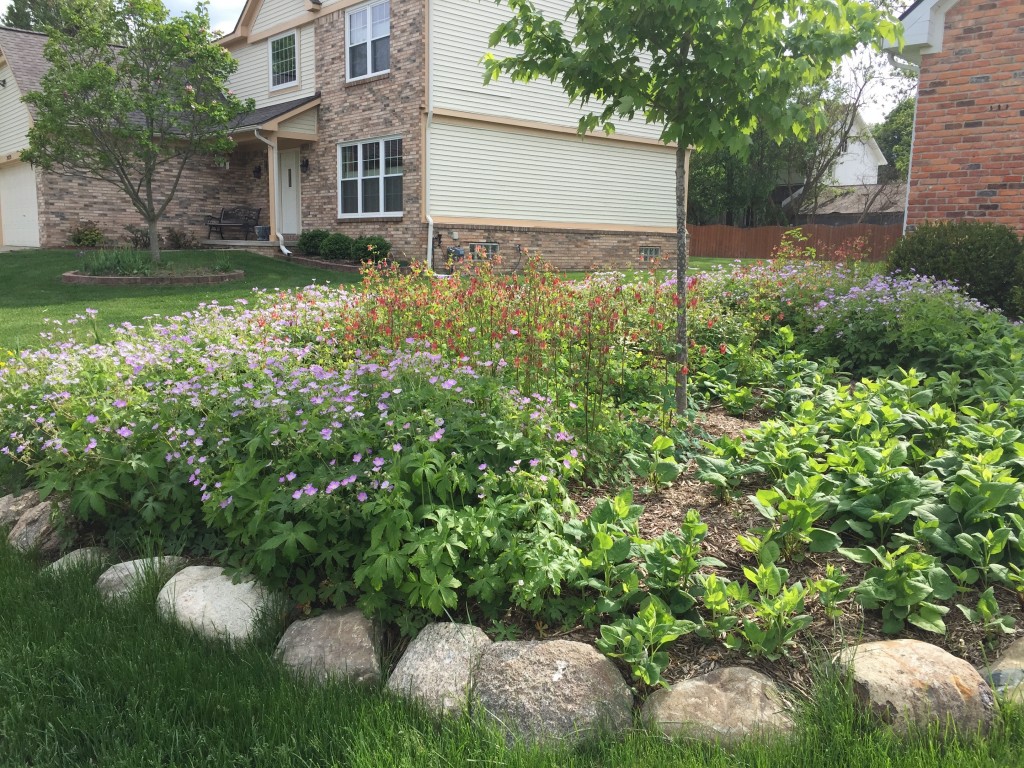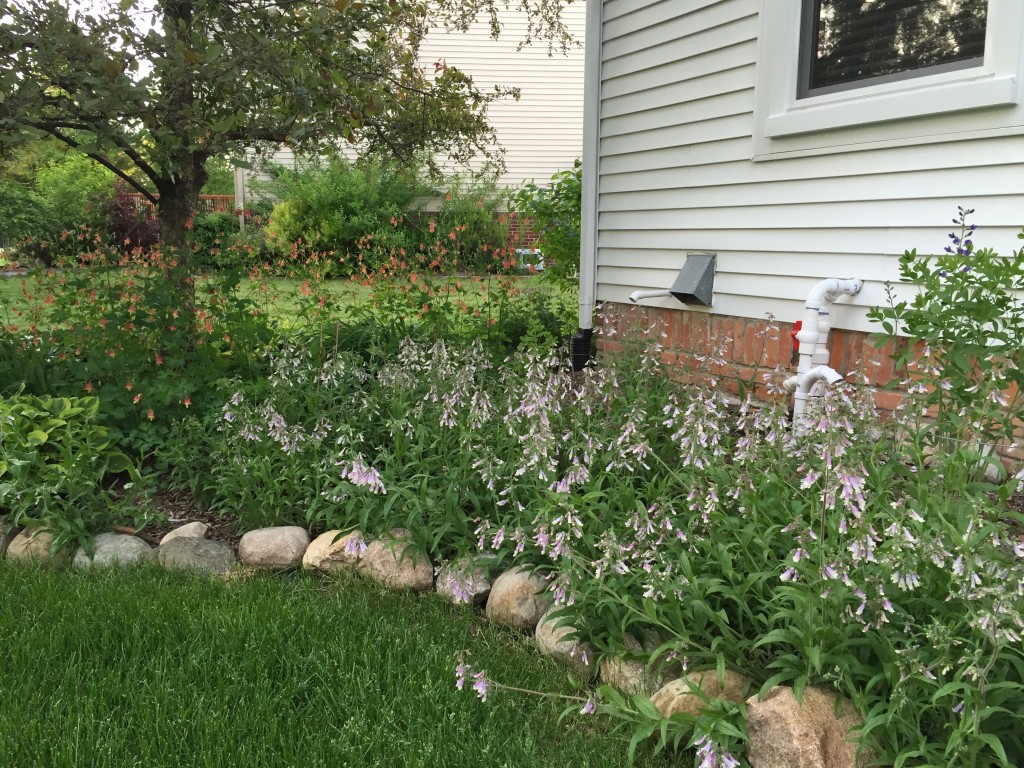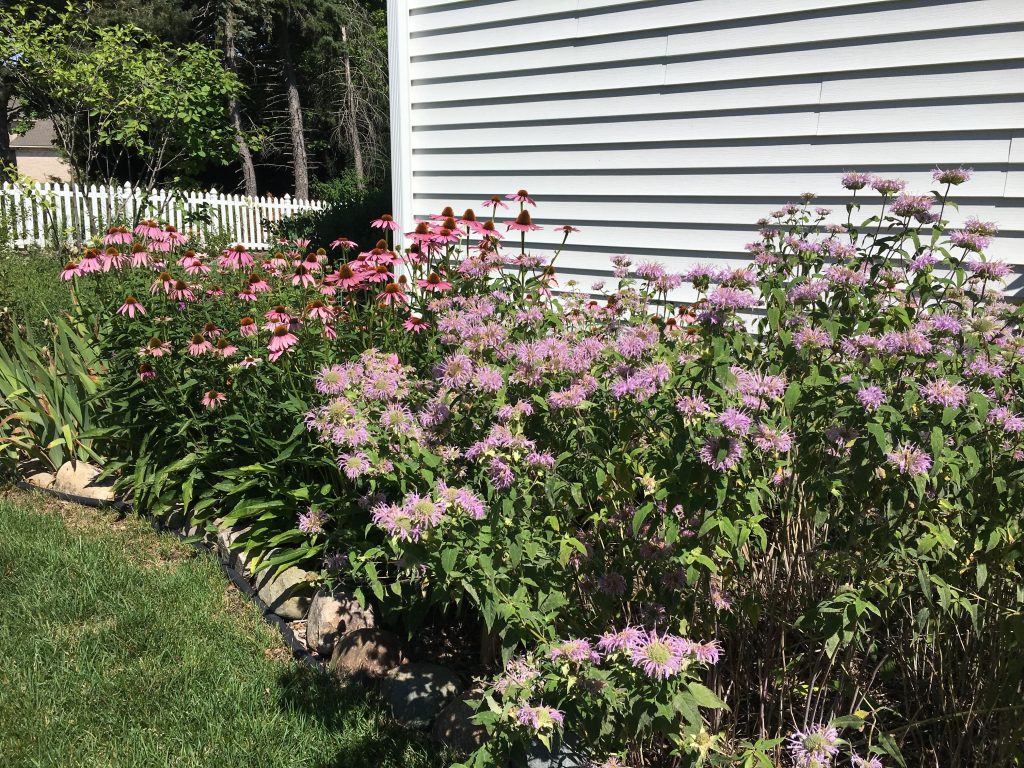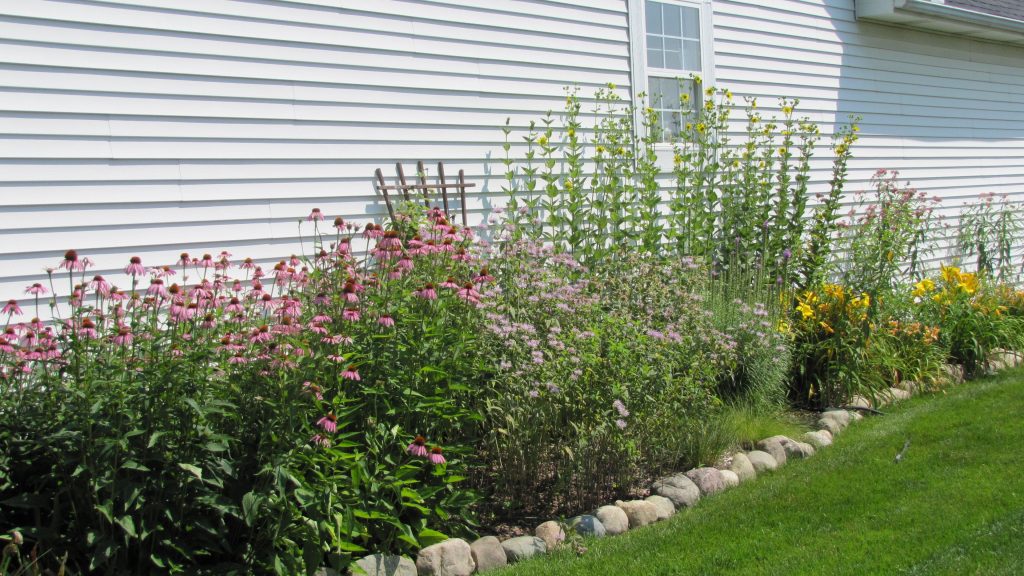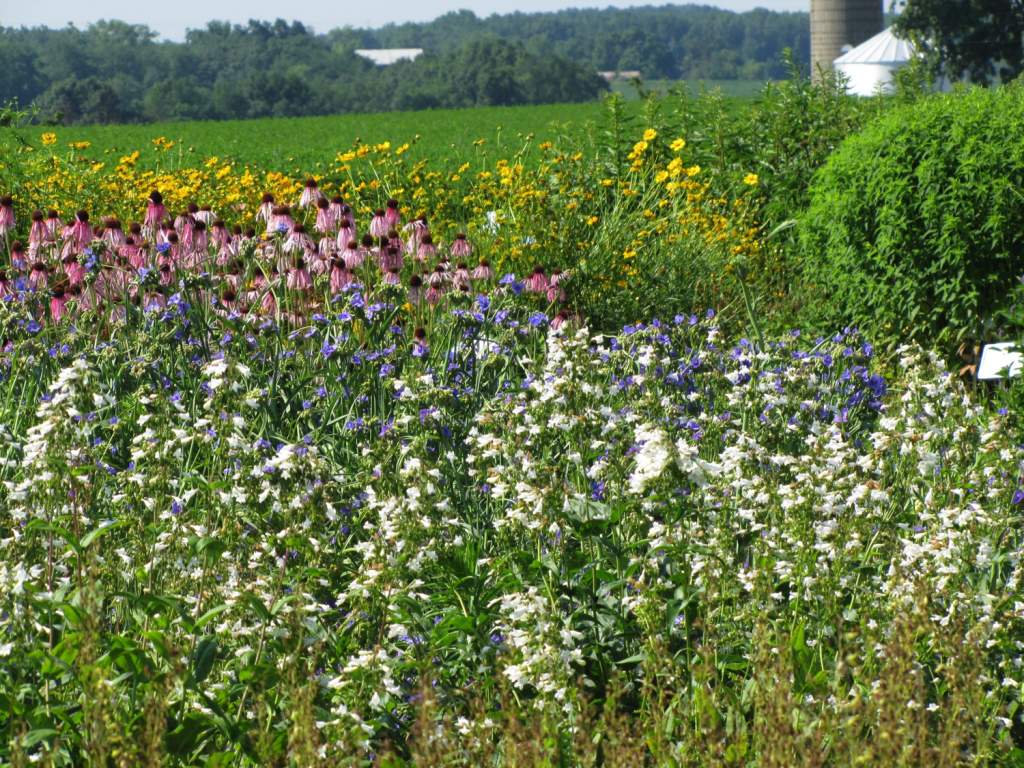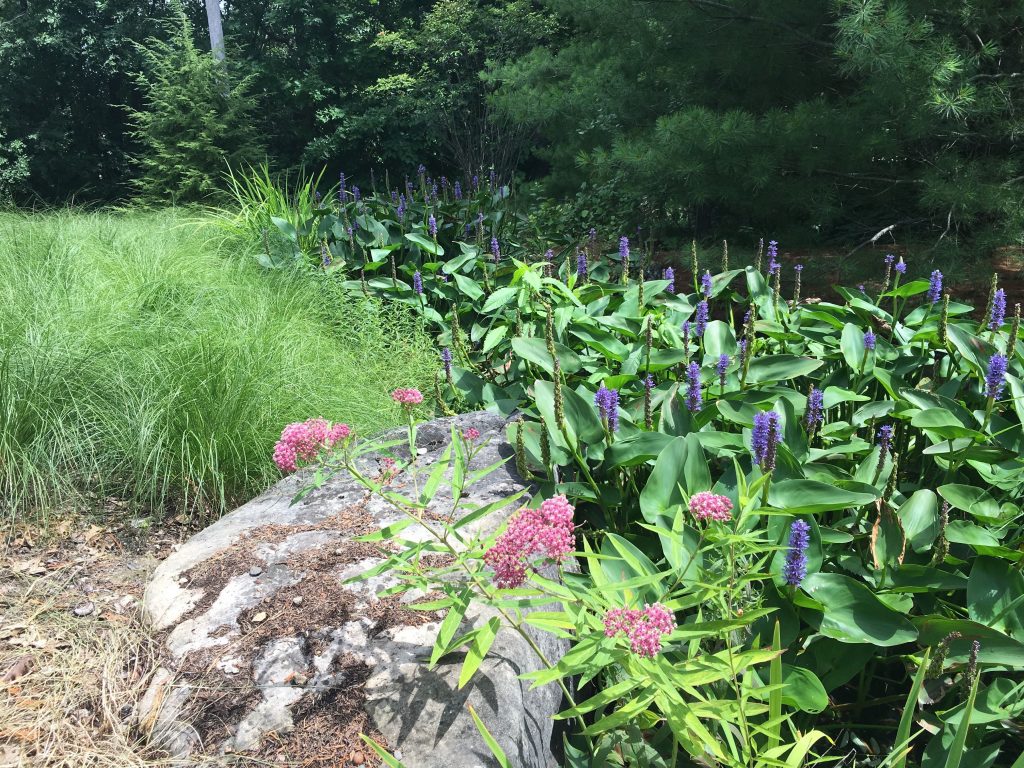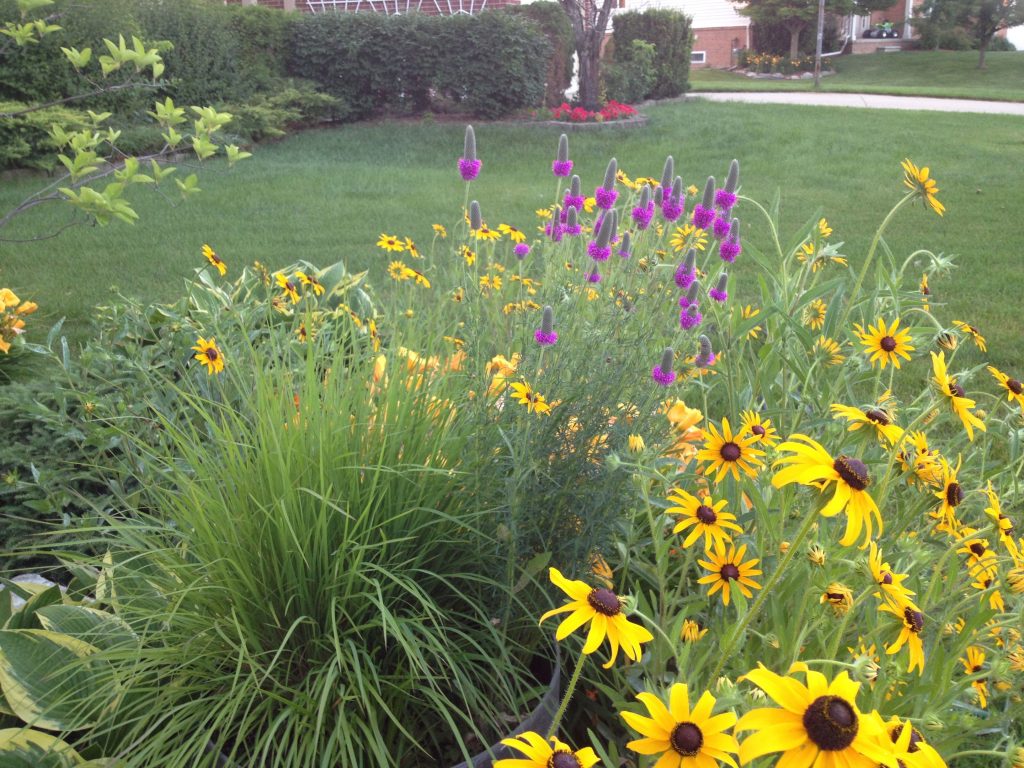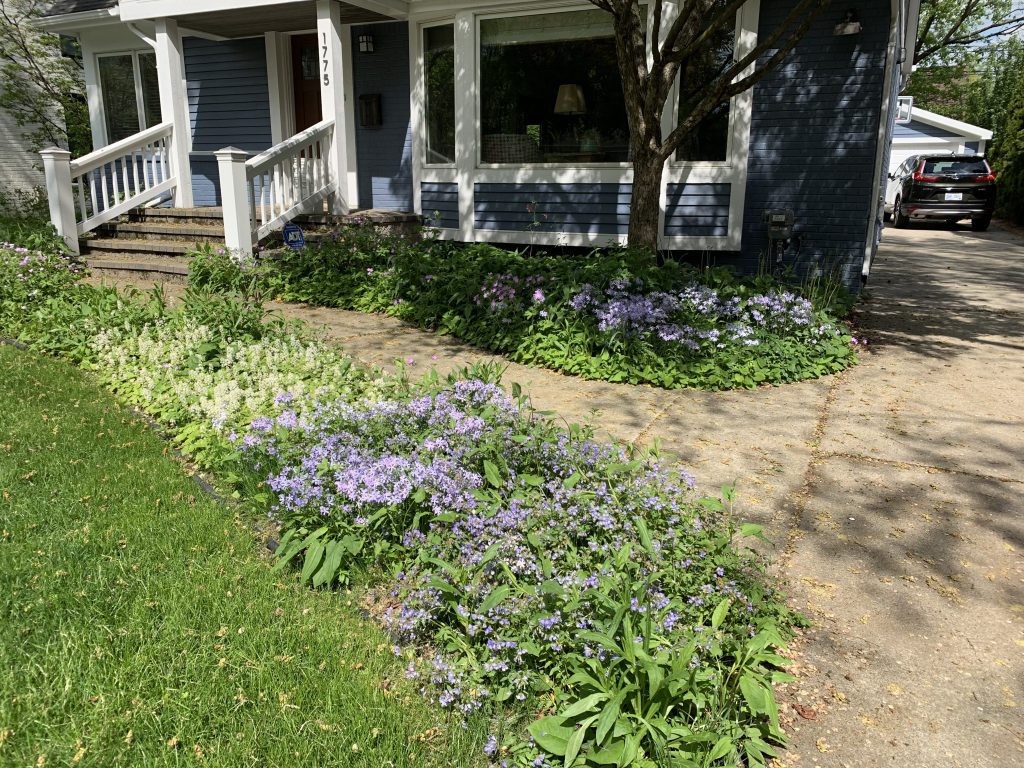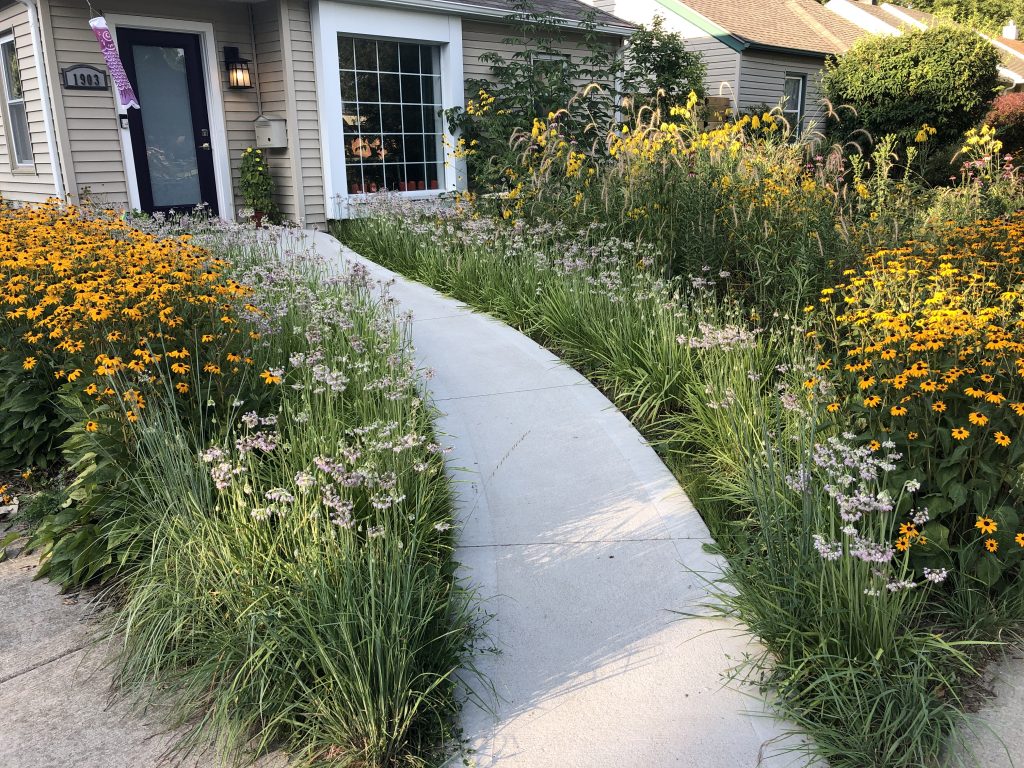Perennial beds are tried and true and have been a staple of landscapes for 200 years. Our native perennial beds will attract and support butterflies, bees, hummingbirds, and other species of birds.
Our style is different than traditional horticultural plantings in which plants are separated by seas of mulch. In fact, many traditional plantings have more area covered in mulch than plants, making you wonder if they hate plants for some reason.
Our plantings are dense with plants, generally spaced 12 inches apart, 18 if the budget doesn’t allow for so many plants. This dense planting has several advantages.
By packing plants in tightly, they are more weed resistant because the plants can inhibit weed germination by providing competition for water, space, light, and nutrients.
Although we generally lay a thin layer of mulch to suppress weeds and maintain soil moisture at planting, you will never have to mulch again. Because we are installing plants suited to the site conditions, mulch is not needed to hold soil moisture. In addition, the density of the plants inhibits weed seed germination, eliminating the need for mulch. This is a more sustainable solution.
Dense plantings are better at self healing. Any bare space resulting from a plant dying or a bison tearing through it (ok, maybe the dog) will be quickly filled in from the abundant seeds being produced by the plants.
Another feature of our plantings is that we try to bridge the difference between traditional horticultural plantings and wild spaces. The density of the planting acknowledges the way in which plants arrange themselves in the wild. Yet, we maintain order and legibility by placing perennials in masses and drifts and repeating them when space allows.
In addition, we underplant the perennials with a matrix of grasses or sedges to provide structure and support for taller perennials, winter interest, and to fill in any bare spaces to suppress weeds.
These dense plantings will eliminate the need for mulch, reduce weeding, provide food for wildlife in the form of leaves to be eaten by insects and seeds for birds, and, of course, will be beautiful to the human eye.
Click here to see examples of native perennial beds we have designed and installed.
